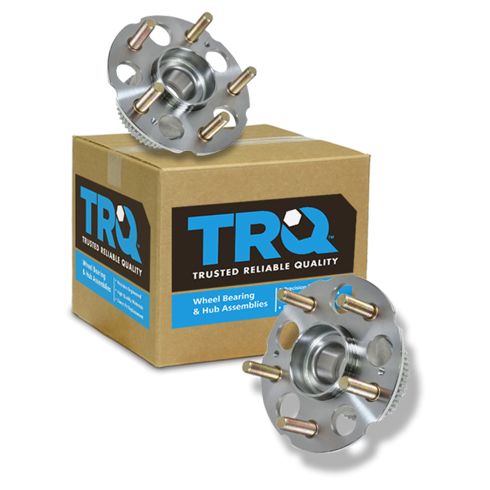1ASHS00423-Honda Odyssey Isuzu Oasis Rear Driver & Passenger Side 2 Piece Wheel Bearing & Hub Assembly Set TRQ BHA53545

Replaces
Honda Odyssey Isuzu Oasis Rear Driver & Passenger Side 2 Piece Wheel Bearing & Hub Assembly Set TRQ BHA53545

Product Reviews
Loading reviews
4.55/ 5.0
11
11 reviews
October 21, 2013
Great service. I recieved my parts within a week. Robert Donner and I thank you!!
OEM fit and quality
February 23, 2018
Bought these more than 2 years and 50,000 miles ago. No problems whatsoever. Processing and delivery was quick. Packaging and fitment was excellent. Hubs came with all the necessary hardware needed for the install.
Great value!
March 26, 2018
I was pleased with the look and feel of quality.I was especially pleased with the price,and the fact that they are sold in pairs.It seems reason,if you're to replace one side...you may as well do the other side too.Highly recommend!
Will not fit!
May 26, 2018
Ordered and bought the TRQ product and will not fit the rear of my 2003 Honda Odyssey - had to buy KLF bearing/hub assembly and they fit easily - do not buy
Good so far
December 23, 2018
Bearings where very reasonably priced. All the torque specs where included. Also helpful videos for any possible install questions you may have.
So far very impressed with the bearings.
November 21, 2019
Parts came quickly and fit great.
Perfect fit
January 22, 2020
Looked like good quality just like Honda parts, fit perfectly. But price was so much cheaper than Honda parts. $200 vs $40. I bought from 1aauto.com because it is highly rated, BBB, and provides video on how to install it. Only time will tell if they hold up.
Works awesome
March 6, 2020
Fits perfectly with no issues at all, great build quality and works perfectly like a oem. Will definitely recommend
Videos and parts are great for the garage mechanic.
October 15, 2023
Everything I get from one a auto fits exactly like it is supposed to. I gave my 16-year-old son, the video to watch and then we collected all the tools we needed. He did the work, and I did the supervising. He can confidently say that he replaced the wheelbearings on our van.
The videos and the parts are great.
2004 honda odyssey rear bearing&hub.
February 20, 2024
Fast shipping. Works perfectly on my 2004 honda odyssey. Not sure how long will it last, but it fixed the noise issue.
May 30, 2024
Product fit perfect. No issue with installation.
Customer Q&A
Does it comes with 36 mm nuts?
April 25, 2022
10
These do not come with new axle/spindle nuts.
April 26, 2022
T I









